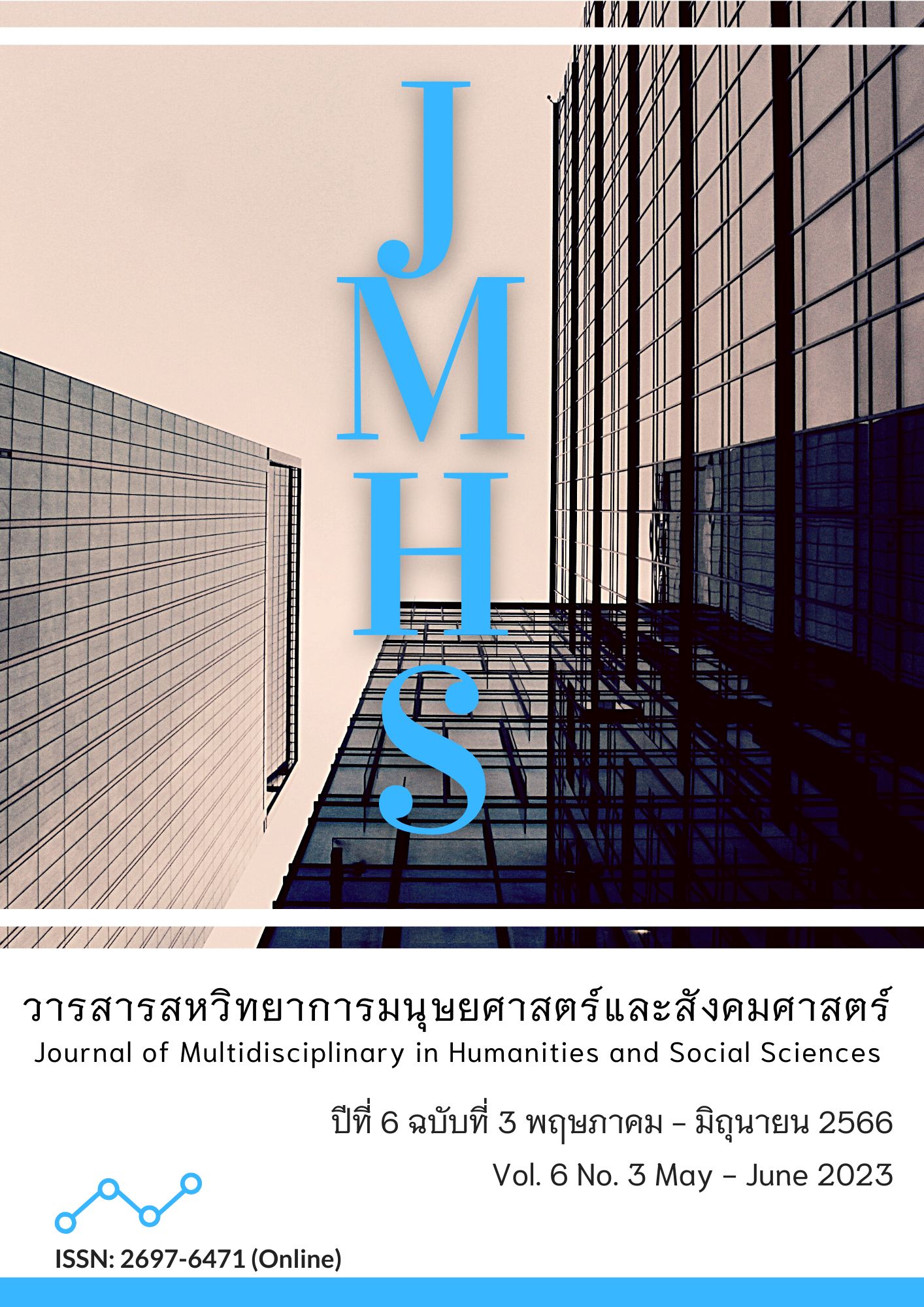Model of Causal Factors Influencing the Success of Hospital Construction Business Organizations in Thailand
Main Article Content
Abstract
This article aimed to 1) study the causal factors influencing success; 2) analyze the causal influence of factors affecting success; and 3) develop a model of causal factors influencing success by studying hospital construction enterprises. In Thailand. This research used mixed methods. The sample size was 389 entrepreneurs, executives, and employees. Using a random sampling method, 12 people were entrepreneurs and experts. The instrument used for data collection was a questionnaire. The statistics used in this research were percentage, mean, standard deviation, and structural equation model analysis by the AMOS program.
The research results were found as follows: 1) Factors influencing the success of hospital construction business organizations in Thailand were business organization management. The speed of the business organization's engagement with business organizations and sustainability of business organizations; 2) management of the organization, the speed of the business organization Engagement with business organizations and the sustainability of business organizations and the success of the organization had a direct and indirect influence on the success of the hospital construction business in Thailand; and 3) in the causal factor model influencing the success of hospital construction business organizations, there was a relationship and influence from organizational management and the speed of the organization, with the sustainability aspect of the organization supporting the success of future business organizations.
Article Details

This work is licensed under a Creative Commons Attribution-NonCommercial-NoDerivatives 4.0 International License.
Views and opinions appearing in the Journal it is the responsibility of the author of the article, and does not constitute the view and responsibility of the editorial team.
References
สุธีราพร อ่วมคร้าม และ บุญใจ ศรีสถิตย์นรากูร. (2558). ปัจจัยจำแนกการเลือกใช้บริการของผู้รับบริการโรงพยาบาลรัฐบาลและเอกชน กรุงเทพมหานคร. วารสารพยาบาลศาสตร์ จุฬาลงกรณ์มหาวิทยาลัย, 27(1), 83-94. สืบค้นจาก https://he01.tci-thaijo.org/index.php/CUNS/article/view/79184
อนุวัฒน์ ทรัพย์พืชผล. (2538). การประชาสัมพันธ์สำหรับนักธุรกิจ. กรุงเทพฯ: ซีเอ็ดยูเคชั่น.
Bernard, M. (2012). Business at the Speed of NOW. New Jersey, USA: John Wiley & Sons.
Bodie, Z., Kane, A., Marcus, A. J., & Mohanty, P. (2005). Investments. (6th ed.). New Delhi: Tata McGraw-Hill.
Chong, A. Y. L. (2013). Predicting m-Commerce Adoption Determinants: A Neural Network Approach. Expert Systems with Applications, 40, 523-530. https://doi.org/10.1016/j.eswa. 2012.07.068
Davis, J., Frechette, H. M., & Boswell, E. H. (2010). Strategic Speed: Mobilize People, Accelerate Execution. Massachusetts: Harvard Business.
Hitchcock, D., & Willard, M. (2009). The Business Guide to Sustainability: Practical Strategies and Tools for Organizations. USA.: Earthscan.
Hoskisson, R. E., Hit, M.A., & Ireland, R. D. (2009). Business Strategy: Theory and Cases. (2th ed.). Cengage South-Western.
Kaplan, R.S., & Norton, D. P. (2006) Alignment: Using the Balanced Scorecard to Create Corporate, Synergies. Boston: HBS.
Lim, G. S., Mathis, R. L., & Jackson, J. H. (2010). Human Resource Management. Singapore: Cengage Learning Asia.
Schermerhorn, J.R. (2008). Management. (9th ed.). USA.: John Wiley & Sons.
Teeratansirikool, L., Siengthai, S., Badir, Y., & Charoenngam, C. (2013). Competitive Strategies and Firm Performance: The Mediating Role of Performance Measurement. International Journal of Productivity and Performance Management, 62(2), 168-184. https://doi.org/10.1108/ 17410401311295722


